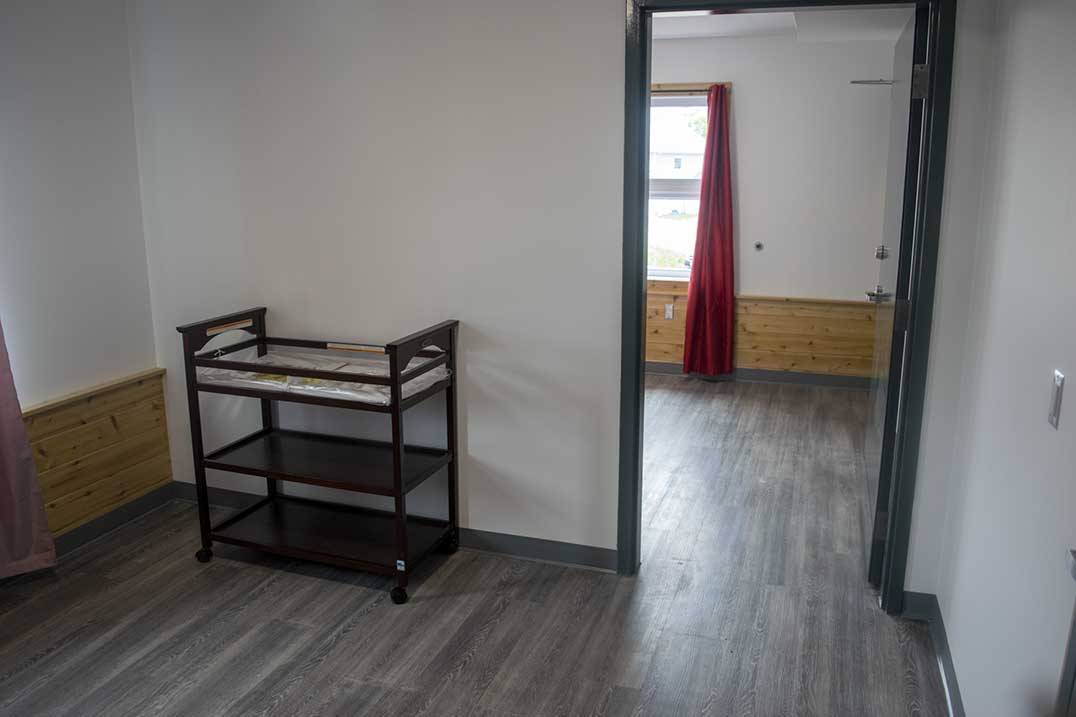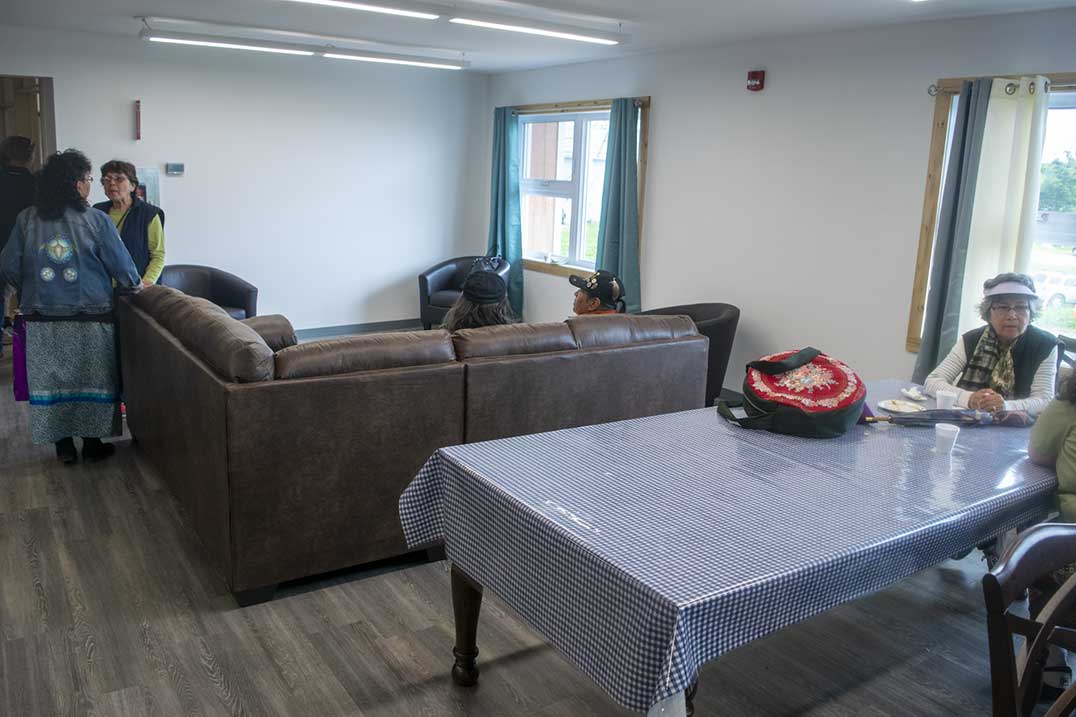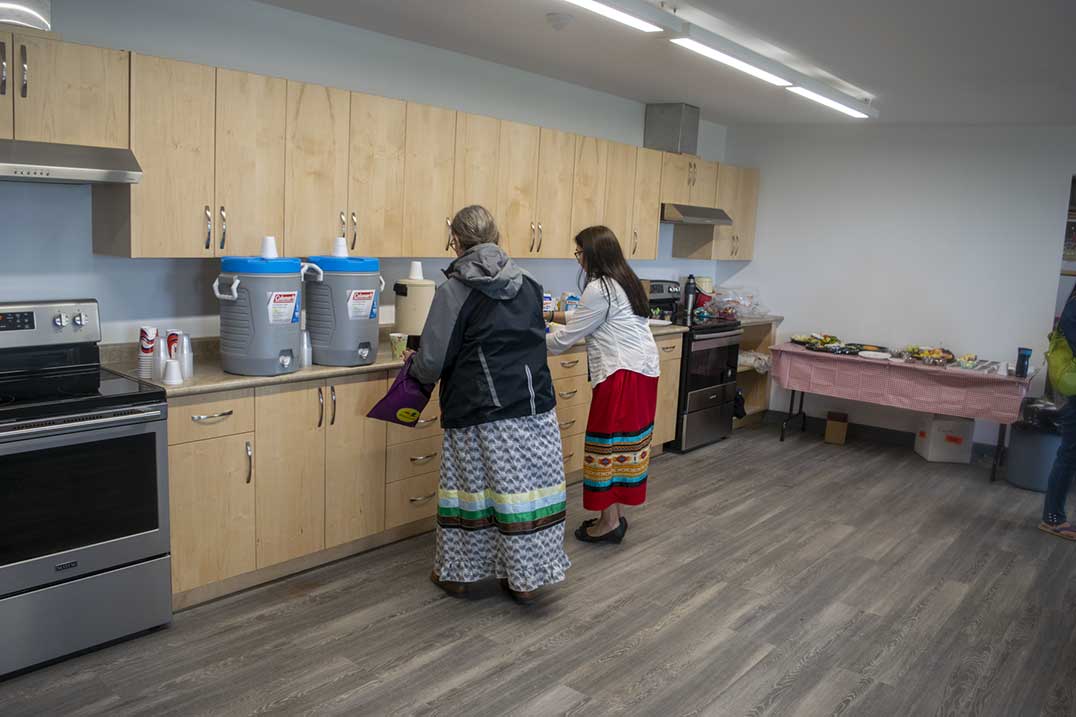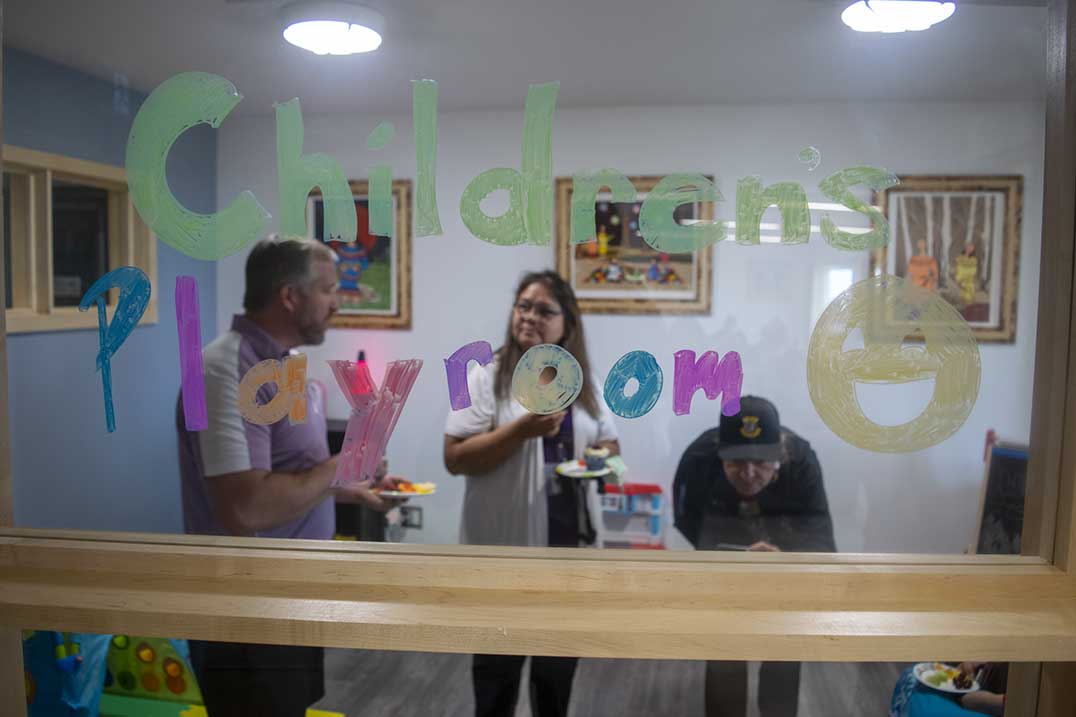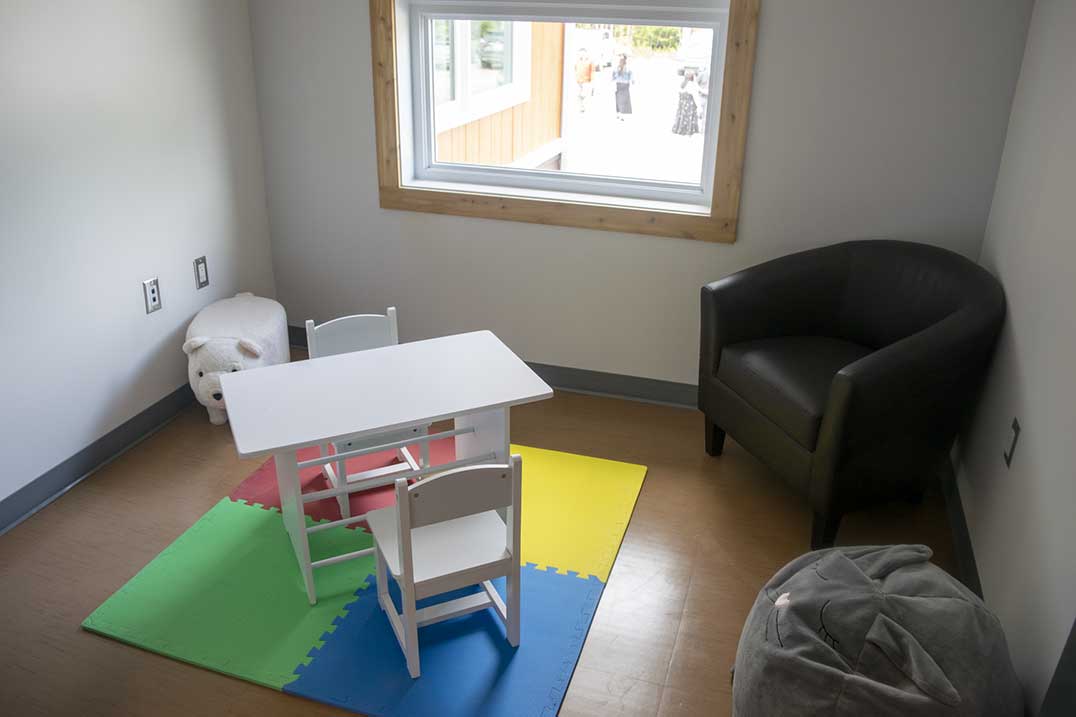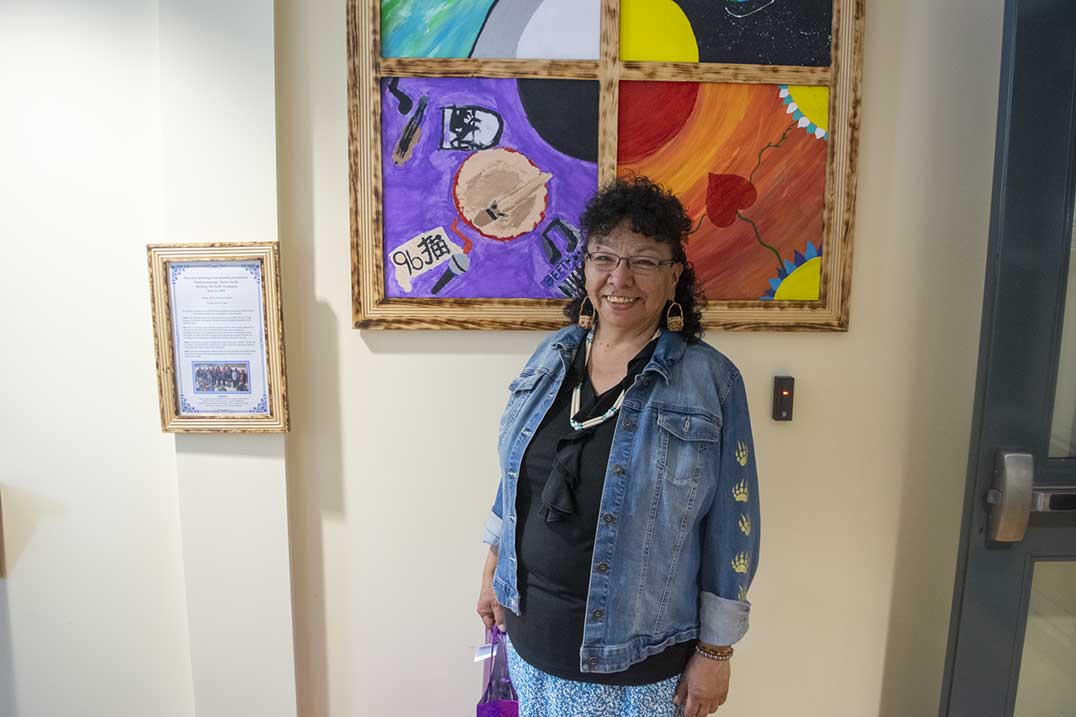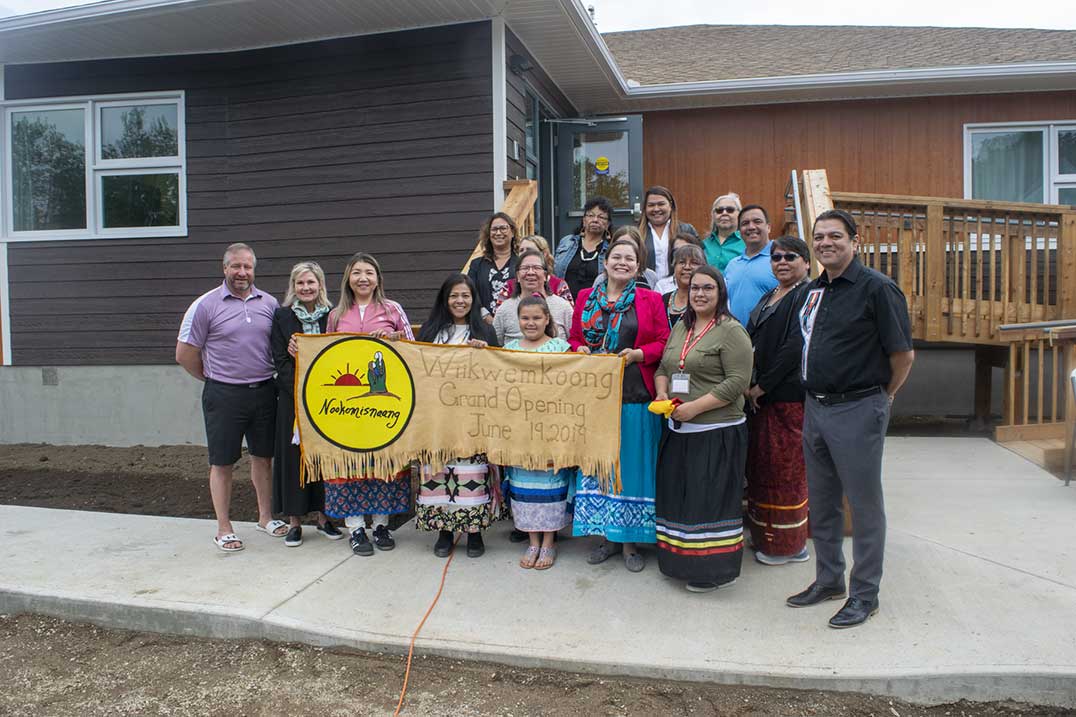WIIKWEMKOONG – Community members in Wiikwemkoong have new reasons to celebrate their resilience and efforts designed to better their own people through the grand opening of Nookomisnaang Shelter, a safe haven for victims of family and domestic violence.
The event began with an opening prayer by Brooklyn Pheasant and an opening song by the Pontiac School Grade 6 Girls’ Drum Group.
“This shelter will provide temporary relief for those who are victims of family violence,” said Kerry Assiniwe, the communications and media services employee at Wikwemikong Health Services who served as emcee for the event. She applauded the presence of community members, staff members of Rainbow Lodge, people working in the education sector and the healthcare sector as well as a few youths, saying that their presence proved this shelter’s importance to the whole of Wiikwemkoong.
“This has been a long time coming for the community,” said Wiikwemkoong Ogimaa Duke Peltier in offering his remarks as the first speaker of the day.
In 2016, the federal government set aside a total of $10.4 million for five Indigenous communities across Canada to build shelters for victims of family violence on-reserve. This funding came from the Canada Mortgage and Housing Corporation (CMHC) and was directed to Lake Babine, BC; Black Lake, SK; Nisichawayasihk, MB; Wiikwemkoong; and Kawawachikamach, QC. Nookomisnaang Shelter is the fourth of the five facilities to open, ahead of the centre in Quebec. It is expected to take on its first set of residents in July.
Naandwechige-gamig Wikwemikong Health Centre’s health services director Mary Jo Wabano spoke next, acknowledging the significance of beginning the day with a spiritual ceremony.
“There’s a great team of people in Wiikwemkoong who pulled together to get our (funding) application in on time,” said Ms. Wabano. “We will let people know that this is a safe place to come to, a safe place to begin their healing journey … the healing begins as soon as they walk through that door,” she said.
Nookomisnaang Shelter manager Mary Pheasant then addressed the crowd. She thanked everyone for their efforts and remarked at how the sign had not once been vandalized in the year since it was erected, something she described as a testament to the community’s understanding of the significance of the shelter.
“Having this in the community will give them the confidence (to reach out for help),” she said, noting that the shelter will be operating at capacity from the moment it opens its doors to residents.
CMHC First Nation housing Ontario team leader Terri Gibbons commended the many community members who had come out to support the shelter launch.
“Every detail was thought through so wonderfully,” she said. “It is particularly critical for survivors of family violence to have safe, stable access to housing.”
Diane Bain of Indigenous Services Canada reflected on how the smell of fresh paint through the hallways was symbolic of the fresh start that will be offered to people through the shelter.
“Nookomisnaang will ensure culturally appropriate services are available to those people when they need them,” said Ms. Bain, who is from M’Chigeeng but has family connections to Wiikwemkoong. “Thank you Ogimaa (Peltier) for your leadership and ensuring such an important service is provided to this community.”
Algoma-Manitoulin MPP Mike Mantha lauded the community benefits of hosting such a shelter.
“I see endless possibilities for people in this home,” he said. “We all heal differently. It’s nice to see traditional healing processes … available here for community members.”
Chiefs of Ontario First Nations Women’s Caucus chair Rebecca Timms was the last to deliver opening remarks.
“This building is not only going to serve men, women and families, but it’s going to be a home fire for families. It’s very unique,” she said.
The next to speak was Trudy Pitawanakwat Angeconeb, who educated the group about the significance of the name which was derived from a story her father, Isaac Pitawanakwat-baa, shared at a shelter planning meeting two years prior.
In the story, Mr. Pitawanakwat shared a story of guiding his grandmother through the forest, when she had to stop to rest. He became cold and his grandmother wrapped him in her shawl, leading him to feel a sense of protection, safety and love that was stronger than anything he had felt. Nookomisnaang translates to ‘Grandmother’s Place,’ which strives to encapsulate that feeling for the people it serves.
Ms. Pitawanakwat Angeconeb urged staff to not give up on people when they go through the tough parts of the cycle of healing.
Douglas Pitawanakwat then spoke on behalf of his daughter Alexandria, the designer of the winning logo for the shelter as chosen through a contest, who could not be present. The logo features a woman and child sitting on a hill, looking at the sun. A twinge of blue in the centre represents the elder Mr. Pitawanakwat. The setting of the logo is representative of the shelter’s location on a hilltop, providing sweeping panoramic views of Wiikwemkoong (Smith) Bay.
Following a closing prayer and song, the gathered guests were invited to tour the facility and enjoy refreshments inside.
The shelter’s inclusion of men in addition to women and children may seem notable when considering the rarity of shelters dedicated for battered men across Canada. According to the Canadian Centre for Men and Families, before its centre opened in Toronto the only other male-oriented facility in Canada existed in Winnipeg. Ms. Pheasant said the inclusion of men was not a topic that required much discussion.
“That’s our (Anishinaabe) way. It’s natural for this to be a shelter for everyone, not just one group,” she said, acknowledging that if a vulnerable client feels uncomfortable being around men, they will work to find alternate accommodations for them.
Nookomisnaang has capacity for 17 persons. The inner areas of the facility are behind three sets of locked doors that have controlled access. There is a smudge room that will facilitate talking circles, meditation, yoga, cedar baths and other healing techniques. Bordering that room is a children’s play area and a dining/recreation room with a massive kitchen complete with two stoves.
The separate youth wing has six bedrooms and a separate family wing has two massive rooms with attached washrooms; the living area is divided into two separate spaces similar to an adjoining hotel room, so the space can be shared or closed off when needed.
Safety is a key priority for the shelter. There are two counsellors on hand at all times, including through the night, the doors lock automatically upon exit and the windows are located high up and designed to deter any possible intrusions.
Ms. Pheasant said although the facility is federally funded, it has been designed to meet the stricter provincial requirements in case Ontario funding becomes available in the future.
The basement of the centre provides a wide-open room for community gatherings and special events. It is separated from the upstairs living quarters by a locked door.
Several desks and other pieces of office furniture have been donated by the Wikwemikong Tribal Police Service which will facilitate Contact North to bring in computers for in-house education and also enable other tools such as sewing machines. There will also be a release program with equipment such as punching bags where residents can vent their frustrations in a safe manner. Ms. Pheasant said this contributes to the holistic nature of the shelter’s overall design.



